THE DISTRIBUTION BULLETIN ISSUE #25
09/Jul/2015
HOW TO BE UNSTOPPABLE
Sean Baker wills his films into the world.
He fearlessly shot his new film, Tangerine, entirely on the iPhone 5s. It dazzled audiences and critics when it premiered at Sundance and is now being released theatrically. It looks great on the big screen and has energy and style to burn. Using the iPhone was the most affordable way to shoot Tangerine, and turned out to be the very best way to make it.
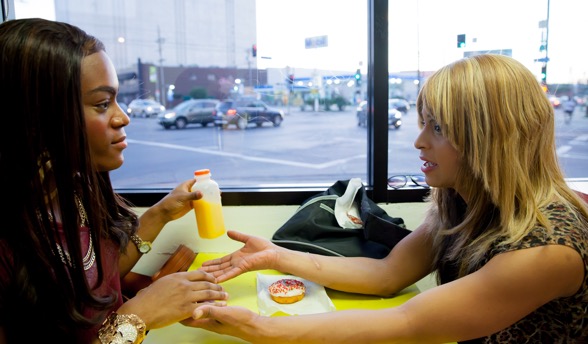
Sean shot his first feature Four Letter Words in 1996 and finally finished it in 2000. Made for $80,000 with 35mm short ends, it's the only movie he has done on film. In 2004, he shot Take Out on standard definition video for $3,000 and “finished it with favors.” In 2008, he made Prince of Broadway on HD for $45,000. Then in 2012, he completed Starlet, which was filmed in HD on a $235,000 budget. Starlet received enthusiastic reviews, won the Robert Altman Award at the Independent Spirit Awards, and was distributed by Music Box Films.
After Starlet's success, “something almost happened,” Sean explained. Having made four features that received steadily increasing recognition and distribution, Sean hoped he could finally access much higher levels of financing. Only interested in directing his own scripts, Sean has been unwilling to work as a director for hire on films he didn’t write. It looked like his script Caviar about the Russian-Armenian underworld in Brooklyn was going to be financed for between $10 and $15 million. After waiting 1½ years for the money to arrive, Sean decided he would have to return to the world of micro-budget filmmaking. He contacted Mark Duplass, who agreed to put together the financing for a new film set in the world of transgender prostitutes. Sean committed to make it for less than half the cost of Starlet (i.e. under $117,500).
CHOOSING THE IPHONE INSTEAD OF A CAMERA
He began his research in the spring of 2013. While he wrote the script with Chris Bergoch, Sean began exploring how to shoot it. He couldn’t afford to use expensive digital cameras. He didn’t want to shoot on more affordable DSLR cameras, which are used on so many micro-budget features. He felt that most films made with these cameras “look the same.” He also couldn't afford to purchase a $4,000 lens to create a more distinctive look, and his limited budget wouldn't allow him to add the two or three extra video people to his crew that shooting on a DSLR would have required.
Impressed by the look of the iPad footage in Spike Lee’s feature Red Hook Summer, Sean decided to shoot a 2-minute test reel with the iPhone 5s he already had in his pocket. He showed it on a large screen at Technicolor to Mark Duplass and the other investors, and they immediately greenlit his use of the iPhone.
He then called Radium Cheung (his DP on Starlet) and asked him to be his co-cinematographer. Sean explained that when Radium, “who has spent 25 years mastering cinematography and was then shooting the TV series The Americans on 35mm” learned that he was planning to shoot the film on an iPhone, he was shocked. Radium then told Sean, “I’ll come to LA and play with you.” Sean responded, “We’re not playing. We are making a real movie. We have to embrace this and discover all the benefits.”
EXPECTED AND UNEXPECTED BENEFITS
When Tangerine was shot in December 2013, Sean and Radium experienced the significant advantages of shooting on iPhones.
It was very cost effective. They bought 3 phones, used 2 and had 1 for backup. Although they had to pay full price because they weren’t buying the phones with service contracts, they later sold 2 of them on eBay.
The other items they needed to shoot on the iPhone were very affordable:
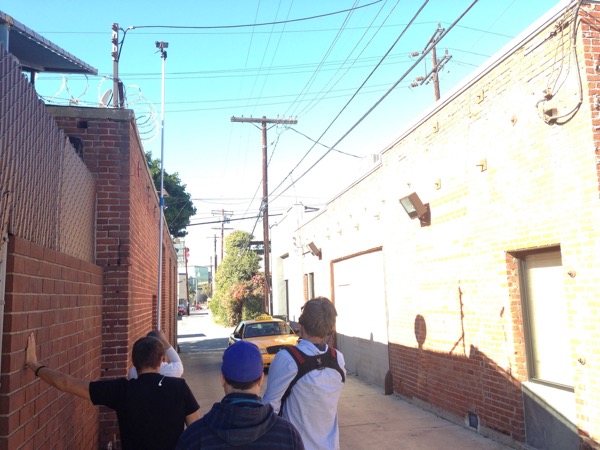
It allowed unprecedented freedom of movement. Instead of being limited by camera equipment, they could move freely and quickly. A former bike messenger, Sean was able to ride his 10-speed bike in circles around the actors while shooting them with the iPhone.
It enabled them to shoot in an almost clandestine way. Using consumer phones and working with a tiny crew, they were able to shoot in challenging neighborhoods without most people knowing they were making a film. When two unsuspecting young men walked into a scene being filmed, one of the actors stayed in character and spontaneously challenged them by asking “What the f**k are you looking at?” The men had no idea they were being filmed until a producer rushed up to them and asked them to sign a release.
It made things easier for the nonprofessional leads. Already used to shooting selfies on smartphones, the actors quickly got used to performing in front of iPhones instead of being intimidated by cameras.
It facilitated the creation of a distinctive look. Shooting in such an unfettered way was perfectly suited to the story. In post, Sean and Radium added film grain as needed to the gritty material, and increased the color saturation. Tangerine is the key color throughout the film, but there are many other vivid ones suited to the visceral material.
AMBITION ON A MICRO-BUDGET
Tangerine bursts the bounds of micro-budget filmmaking.
Sean didn't follow the Mumblecore model, which his executive producer Mark Duplass and his brother Jay had used when they launched their careers. Sean explained that many Mumblecore films are limited to a single location, use very few actors, and have a short shooting schedule. Film critic Amy Taubin observed in her 2007 Film Comment piece that Mumblecore films usually focus on "young adults who are involved in heterosexual relationships and who have jobs (when they have them) in workplaces populated almost exclusively by SWMs and SWFs". Instead Sean decided to shoot a wild ensemble piece all over town about two prostitutes, played by a Latina transgender woman (Kitana Kiki Rodriquez) and a black transgender woman (Mya Taylor) who had never acted in front of a camera before. Sean was determined to not let his ambition be constrained by his budget.
Having already made four features with limited resources, Sean had the talent, experience, and teammates to do the seemingly impossible. While he writes, shoots, edits, directs, and produces, he knew he needed a great team to pull it off. He started with three of his closest collaborators - producer Shih-Ching Tsou (Takeout, Starlet), producer Darren Dean (Prince of Broadway), and co-writer and co-producer Chris Bergoch (Prince of Broadway, Starlet). Then Radium Cheung came on board, and Irin Strauss (Starlet) agreed to record location sound. The crew was very small, never more than 6 or 7.
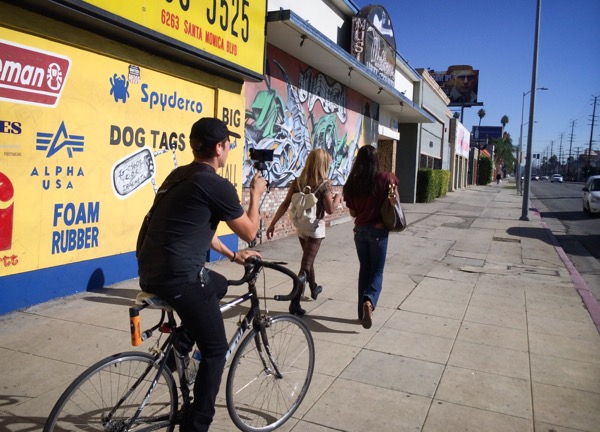
He did agree to limit the story to the events of a single day. He had also initially promised his producers that there would be no music in the film, but eventually was able to acquire music from up-and-coming DJs and musicians via SoundCloud for a total music budget of under $1,700. He insisted that everyone get paid. Following the SAG Ultra Low Budget agreement, he paid his actors $100 a day. He wanted his cast and crew to be able to cover their rent for a few months.
Some of the movie was tightly scripted to make the most of the limited time they had in difficult locations. Many other parts of the film were loosely scripted, allowing the actors to improvise and do alternate takes.
A DIGITAL REVOLUTIONARY
Tangerine marks a new chapter in the ongoing digital filmmaking revolution.
Lars Von Trier’s The Idiots and Thomas Vinterberg’s The Celebration launched this revolution at the 1998 Cannes Film Festival. Flying the flag of the Dogme 95 movement, these filmmakers proved that films shot on inexpensive digital video cameras could succeed at the world's most important film festival.
The barriers to entering the world of independent filmmaking had fallen. Filmmakers could now afford to own the means of production - a digital camera and a laptop. If you wrote a script that could be made with resources accessible to you, no one could stop you from making a film.
(NOTE: When I saw Tangerine at Sundance, I knew I had to write a Bulletin about its significance. I was an early proponent of micro-budget filmmaking (I wrote this article and then this follow-up article in the early 90's when the movement was just beginning) and then created a finishing fund, Next Wave Films (financed by IFC Films), to provide critical support to emerging filmmakers. When I saw the future at Cannes in 1998, I became a strong advocate of digital filmmaking. Following Cannes, my Next Wave Films teammates, Mark Stolaroff and Tara Veneruso, and I did presentations about this digital filmmaking revolution at festivals around the world, made the Next Wave Films website a resource for digital filmmakers, and launched Agenda 2000, the first digital production arm. Since then, digital has become the production norm and now Sean has boldly taken micro-budget filmmaking into the future.)
Sean was truly inspired by the Dogme 95 movement. Seeing The Idiots liberated him to make his next feature Take Out on digital video with a two-person crew. Teaming up with Shih-Ching Tsou, Sean shot for 30 days around New York City. Working under the radar without permits or insurance, Sean was able "to shoot in a way where I didn't have to worry about the formality of filmmaking I learned in film school. We had the freedom to make Take Out without technical limitations, and the time to experiment." Instead of trying to light scenes perfectly, Sean could focus on "the actors and their character arcs." The Dogme 95 movement also influenced Sean's subsequent films, including Tangerine.
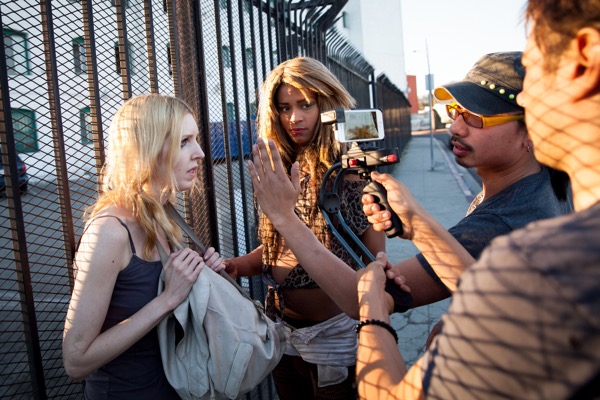
Sean will inspire the next generation of independent filmmakers. Deciding to shoot Tangerine on the iPhone was both a pragmatic choice and a serious aesthetic decision. He realized he couldn't make the film he really wanted to make any other way.
Sean and Radium understood the significance of using a smart phone rather than a camera. “We were shooting on a device that everybody owns. This levels that playing field. The look of the device is available to all.”
Tangerine will also show emerging filmmakers that it's possible to make truly ambitious films on a micro-budget. The achievement of the film is consistent across the board. The acting, writing, cinematography, directing, sound and music are all first rate, making for a fast, funny and moving experience. Sean is well aware of the difficulty of assessing one’s own work but did admit “I’d be entertained by it if I hadn’t made it.”
ONWARDS
Sean has written and directed 5 features in 15 years, in addition to being a co-creator, co-writer, and co-director on the long-running cult TV show Greg the Bunny. It hasn’t been easy, but he has been single-minded about continuing to write and direct movies regardless of how much money he can raise.
Sean believes “that you have to move forwards by any means possible.” He understands that it is essential to keep making movies ‘to learn your craft.’ Shooting films on micro-budgets has taught him many lessons. In 1994, one of his friends told Sean that he didn’t want to film his script until he had all the resources in place and could make it right. "My friend is now 50 and still hasn’t made his first film."
While Sean may make a future film on an iPhone, he doesn’t want it to be his next one, which he hopes to shoot on 35mm. “I really want to get to film before it’s dead.”
Tangerine is the fruition of all his previous filmmaking experiences. It is his best film yet. I’m hopeful that great opportunities will come his way, and confident that - one way or another - he will continue to be unstoppable.
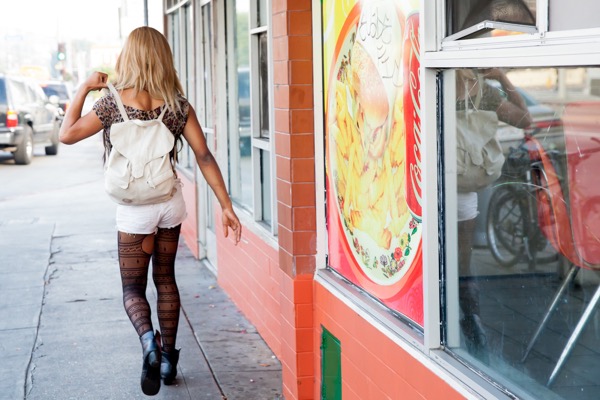
=====================================================
I highly recommend an article on the making of Tangerine written by my longtime colleague, producer Mark Stolaroff, who runs No Budget Film School.
© 2015 Peter Broderick
Sean Baker wills his films into the world.
He fearlessly shot his new film, Tangerine, entirely on the iPhone 5s. It dazzled audiences and critics when it premiered at Sundance and is now being released theatrically. It looks great on the big screen and has energy and style to burn. Using the iPhone was the most affordable way to shoot Tangerine, and turned out to be the very best way to make it.

Sean shot his first feature Four Letter Words in 1996 and finally finished it in 2000. Made for $80,000 with 35mm short ends, it's the only movie he has done on film. In 2004, he shot Take Out on standard definition video for $3,000 and “finished it with favors.” In 2008, he made Prince of Broadway on HD for $45,000. Then in 2012, he completed Starlet, which was filmed in HD on a $235,000 budget. Starlet received enthusiastic reviews, won the Robert Altman Award at the Independent Spirit Awards, and was distributed by Music Box Films.
After Starlet's success, “something almost happened,” Sean explained. Having made four features that received steadily increasing recognition and distribution, Sean hoped he could finally access much higher levels of financing. Only interested in directing his own scripts, Sean has been unwilling to work as a director for hire on films he didn’t write. It looked like his script Caviar about the Russian-Armenian underworld in Brooklyn was going to be financed for between $10 and $15 million. After waiting 1½ years for the money to arrive, Sean decided he would have to return to the world of micro-budget filmmaking. He contacted Mark Duplass, who agreed to put together the financing for a new film set in the world of transgender prostitutes. Sean committed to make it for less than half the cost of Starlet (i.e. under $117,500).
CHOOSING THE IPHONE INSTEAD OF A CAMERA
He began his research in the spring of 2013. While he wrote the script with Chris Bergoch, Sean began exploring how to shoot it. He couldn’t afford to use expensive digital cameras. He didn’t want to shoot on more affordable DSLR cameras, which are used on so many micro-budget features. He felt that most films made with these cameras “look the same.” He also couldn't afford to purchase a $4,000 lens to create a more distinctive look, and his limited budget wouldn't allow him to add the two or three extra video people to his crew that shooting on a DSLR would have required.
Impressed by the look of the iPad footage in Spike Lee’s feature Red Hook Summer, Sean decided to shoot a 2-minute test reel with the iPhone 5s he already had in his pocket. He showed it on a large screen at Technicolor to Mark Duplass and the other investors, and they immediately greenlit his use of the iPhone.
He then called Radium Cheung (his DP on Starlet) and asked him to be his co-cinematographer. Sean explained that when Radium, “who has spent 25 years mastering cinematography and was then shooting the TV series The Americans on 35mm” learned that he was planning to shoot the film on an iPhone, he was shocked. Radium then told Sean, “I’ll come to LA and play with you.” Sean responded, “We’re not playing. We are making a real movie. We have to embrace this and discover all the benefits.”
EXPECTED AND UNEXPECTED BENEFITS
When Tangerine was shot in December 2013, Sean and Radium experienced the significant advantages of shooting on iPhones.
It was very cost effective. They bought 3 phones, used 2 and had 1 for backup. Although they had to pay full price because they weren’t buying the phones with service contracts, they later sold 2 of them on eBay.
The other items they needed to shoot on the iPhone were very affordable:
- Filmic Pro (an $8 iPhone app) was used to lock focus and increase the phone’s compression rate.
- a Steadicam Smoothee rig ($149) was used to hold the iPhone still when shooting.
- a Moondog Lab anamorphic adapter ($160) was used to create the widescreen cinematic look of 2.35.
- a painter’s pole ($35) was used for "crane shoots" (see photo below).

It allowed unprecedented freedom of movement. Instead of being limited by camera equipment, they could move freely and quickly. A former bike messenger, Sean was able to ride his 10-speed bike in circles around the actors while shooting them with the iPhone.
It enabled them to shoot in an almost clandestine way. Using consumer phones and working with a tiny crew, they were able to shoot in challenging neighborhoods without most people knowing they were making a film. When two unsuspecting young men walked into a scene being filmed, one of the actors stayed in character and spontaneously challenged them by asking “What the f**k are you looking at?” The men had no idea they were being filmed until a producer rushed up to them and asked them to sign a release.
It made things easier for the nonprofessional leads. Already used to shooting selfies on smartphones, the actors quickly got used to performing in front of iPhones instead of being intimidated by cameras.
It facilitated the creation of a distinctive look. Shooting in such an unfettered way was perfectly suited to the story. In post, Sean and Radium added film grain as needed to the gritty material, and increased the color saturation. Tangerine is the key color throughout the film, but there are many other vivid ones suited to the visceral material.
AMBITION ON A MICRO-BUDGET
Tangerine bursts the bounds of micro-budget filmmaking.
Sean didn't follow the Mumblecore model, which his executive producer Mark Duplass and his brother Jay had used when they launched their careers. Sean explained that many Mumblecore films are limited to a single location, use very few actors, and have a short shooting schedule. Film critic Amy Taubin observed in her 2007 Film Comment piece that Mumblecore films usually focus on "young adults who are involved in heterosexual relationships and who have jobs (when they have them) in workplaces populated almost exclusively by SWMs and SWFs". Instead Sean decided to shoot a wild ensemble piece all over town about two prostitutes, played by a Latina transgender woman (Kitana Kiki Rodriquez) and a black transgender woman (Mya Taylor) who had never acted in front of a camera before. Sean was determined to not let his ambition be constrained by his budget.
Having already made four features with limited resources, Sean had the talent, experience, and teammates to do the seemingly impossible. While he writes, shoots, edits, directs, and produces, he knew he needed a great team to pull it off. He started with three of his closest collaborators - producer Shih-Ching Tsou (Takeout, Starlet), producer Darren Dean (Prince of Broadway), and co-writer and co-producer Chris Bergoch (Prince of Broadway, Starlet). Then Radium Cheung came on board, and Irin Strauss (Starlet) agreed to record location sound. The crew was very small, never more than 6 or 7.

He did agree to limit the story to the events of a single day. He had also initially promised his producers that there would be no music in the film, but eventually was able to acquire music from up-and-coming DJs and musicians via SoundCloud for a total music budget of under $1,700. He insisted that everyone get paid. Following the SAG Ultra Low Budget agreement, he paid his actors $100 a day. He wanted his cast and crew to be able to cover their rent for a few months.
Some of the movie was tightly scripted to make the most of the limited time they had in difficult locations. Many other parts of the film were loosely scripted, allowing the actors to improvise and do alternate takes.
A DIGITAL REVOLUTIONARY
Tangerine marks a new chapter in the ongoing digital filmmaking revolution.
Lars Von Trier’s The Idiots and Thomas Vinterberg’s The Celebration launched this revolution at the 1998 Cannes Film Festival. Flying the flag of the Dogme 95 movement, these filmmakers proved that films shot on inexpensive digital video cameras could succeed at the world's most important film festival.
The barriers to entering the world of independent filmmaking had fallen. Filmmakers could now afford to own the means of production - a digital camera and a laptop. If you wrote a script that could be made with resources accessible to you, no one could stop you from making a film.
(NOTE: When I saw Tangerine at Sundance, I knew I had to write a Bulletin about its significance. I was an early proponent of micro-budget filmmaking (I wrote this article and then this follow-up article in the early 90's when the movement was just beginning) and then created a finishing fund, Next Wave Films (financed by IFC Films), to provide critical support to emerging filmmakers. When I saw the future at Cannes in 1998, I became a strong advocate of digital filmmaking. Following Cannes, my Next Wave Films teammates, Mark Stolaroff and Tara Veneruso, and I did presentations about this digital filmmaking revolution at festivals around the world, made the Next Wave Films website a resource for digital filmmakers, and launched Agenda 2000, the first digital production arm. Since then, digital has become the production norm and now Sean has boldly taken micro-budget filmmaking into the future.)
Sean was truly inspired by the Dogme 95 movement. Seeing The Idiots liberated him to make his next feature Take Out on digital video with a two-person crew. Teaming up with Shih-Ching Tsou, Sean shot for 30 days around New York City. Working under the radar without permits or insurance, Sean was able "to shoot in a way where I didn't have to worry about the formality of filmmaking I learned in film school. We had the freedom to make Take Out without technical limitations, and the time to experiment." Instead of trying to light scenes perfectly, Sean could focus on "the actors and their character arcs." The Dogme 95 movement also influenced Sean's subsequent films, including Tangerine.

Sean will inspire the next generation of independent filmmakers. Deciding to shoot Tangerine on the iPhone was both a pragmatic choice and a serious aesthetic decision. He realized he couldn't make the film he really wanted to make any other way.
Sean and Radium understood the significance of using a smart phone rather than a camera. “We were shooting on a device that everybody owns. This levels that playing field. The look of the device is available to all.”
Tangerine will also show emerging filmmakers that it's possible to make truly ambitious films on a micro-budget. The achievement of the film is consistent across the board. The acting, writing, cinematography, directing, sound and music are all first rate, making for a fast, funny and moving experience. Sean is well aware of the difficulty of assessing one’s own work but did admit “I’d be entertained by it if I hadn’t made it.”
ONWARDS
Sean has written and directed 5 features in 15 years, in addition to being a co-creator, co-writer, and co-director on the long-running cult TV show Greg the Bunny. It hasn’t been easy, but he has been single-minded about continuing to write and direct movies regardless of how much money he can raise.
Sean believes “that you have to move forwards by any means possible.” He understands that it is essential to keep making movies ‘to learn your craft.’ Shooting films on micro-budgets has taught him many lessons. In 1994, one of his friends told Sean that he didn’t want to film his script until he had all the resources in place and could make it right. "My friend is now 50 and still hasn’t made his first film."
While Sean may make a future film on an iPhone, he doesn’t want it to be his next one, which he hopes to shoot on 35mm. “I really want to get to film before it’s dead.”
Tangerine is the fruition of all his previous filmmaking experiences. It is his best film yet. I’m hopeful that great opportunities will come his way, and confident that - one way or another - he will continue to be unstoppable.

=====================================================
I highly recommend an article on the making of Tangerine written by my longtime colleague, producer Mark Stolaroff, who runs No Budget Film School.
© 2015 Peter Broderick